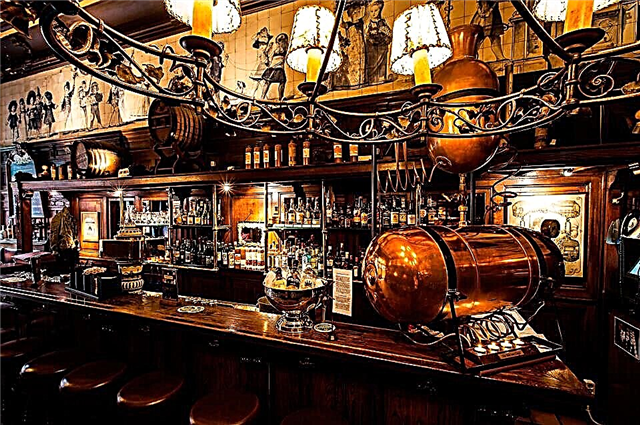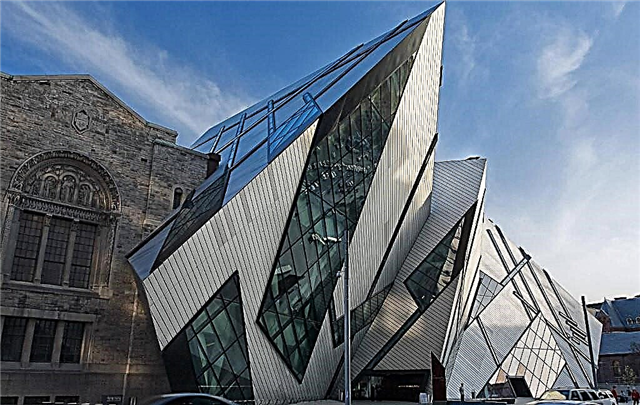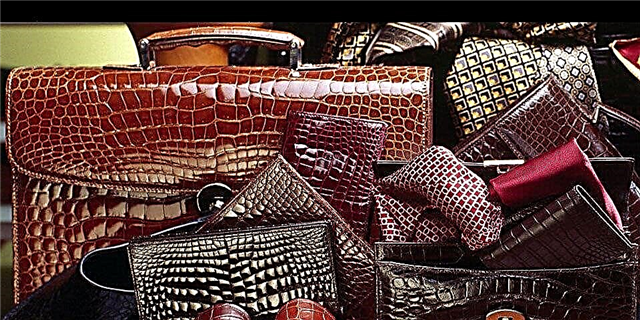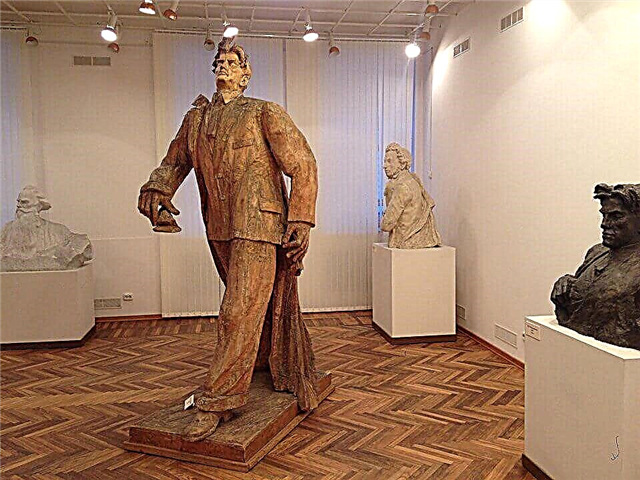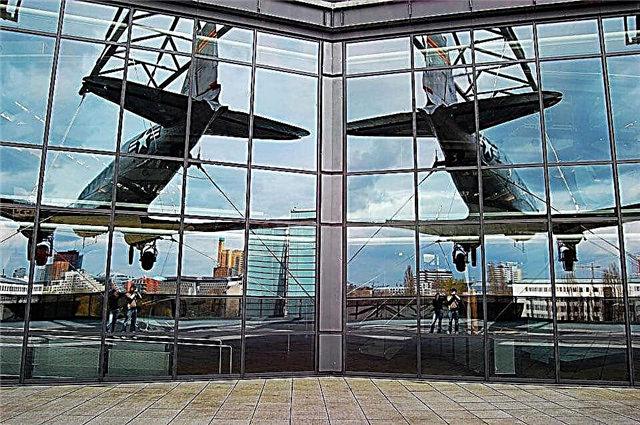Visiting museums is an integral part of any tourist program. It is here that the most valuable, memorable and historically significant artifacts are collected. Here history comes to life and as if transports each guest to the very thick of distant events. That is why we have prepared a list of must-see museums in Berlin.
Pergamon

This unusual name hides one of the most delightful complexes in the German capital. There is hardly a single tourist who has never heard of this unique place before. Pergamon is located in the very center of the city and includes a whole complex of colossal architectural structures.
In the center is the altar of the same name (dated from 160-180 BC), to which thousands of people come to snuggle every day. To understand the popularity of the exhibition, it is worth at least once to be in the company of these monumental buildings.
The collection of masterpieces gathered in one place is also impressive. All of them are divided into three subspecies and allow you to plunge into different eras. Here are collected masterpieces of antiquity, Islamic states and countries that belong to the front of Asia. It is difficult to say where else such an amazing collection of creations from Greece and Rome is collected. And the Processional Route, which was brought here from Babylon (6th century BC), gives visitors a unique experience. Pergamon is open daily and the ticket costs only a few euros.
Jewish Museum

We advise you to take some time to visit the galleries dedicated to the history of the Jewish community. The halls are dedicated to different periods and themes. Here you can get acquainted with the history of the first Jews, find out the names of the most famous representatives of this nation, who made a significant contribution to the development of the German state. It seems that the Germans feel the entire burden of responsibility for the hardships that the Jews had to endure during the war years. The main exhibit of the historical exhibition is the building itself, the author of which is the brilliant architect D. Libeskind. It includes the Tower of the Holocaust, the Garden of Exiles and Exiles. All this makes a very serious impression, so visitors with weak nerves should think carefully before crossing the threshold of the institution. Daily opening hours are from 10 am to 8 pm (on Mondays 2 hours longer), and you will have to pay only 8 euros for a ticket.
Kulturforum

Several cultural and historical institutions are united under this name. To visit all the museums it is worth setting aside a whole day. All lovers of painting will love a walk through the halls of the art gallery and the national gallery. Admirers of musical movements of art will be able to have a great time in the Philharmonic (the oldest building of the complex, founded in the 1960s and capable of accommodating up to 2.5 thousand people at a time) or in the chamber music hall. Well, for connoisseurs of high-quality literature, we recommend that you go to the state library, which contains the works of hundreds of authors of all times and peoples. The Berlin Office of Prints contains a collection of over 100,000 world-renowned artists. Without a doubt, this museum complex is worth adding to the must-see for every Berlin tourist.
Berggrun Museum

There is another interesting art monument in the Charlottenburg area. The impressive collection of exhibits presented in the Berggrun Museum belongs to the style of classical modernism and is considered the largest in the world. The collection was donated by the writer and journalist H. Bergrün and today is part of the cultural heritage of Prussia. Particularly valuable exhibits are the paintings painted by the genius P. Picasso, of which there are, by the way, more than a hundred. The largest collection of his works allows us to trace how the style of painting changed, how from a simple sixteen-year-old boy a professional gradually grew, whose canvases are still among the most coveted by both private collectors and exhibitions around the world.
You will not be able to pass by the paintings of another genius of his time - the German representative of the "avant-garde" style - Paul Klee. The halls showcase about 60 of his best works. But the collection is not limited to these names. In addition to dozens of famous paintings by modernist artists, the works of less venerable artists are often exhibited here. The museum is open every day, except Mondays. The ticket price ranges from 4 to 10 euros.
Bode Museum

One of the most beautiful buildings in Berlin, which is located northwest of Museum Island, belongs to the Bode galleries. The institution is very popular among the indigenous inhabitants of the city and guests of the capital. The presented exhibits are divided among three complexes: the art of Byzantium, the Coin Cabinet and the collection of sculptures. Although the idea of creation belonged to Emperor Frederick III, it was named after the main art critic, who was able to correctly place accents in the collection of valuable exhibits. As soon as visitors enter one of the galleries, many are immediately breathtaking from the rich interior decoration of the gallery and the abundance of the most unique artifacts and works of art presented.
Here you can find the most successful works of the sculptors Schluter and Dala Robbia, magnificent staircases and statues made of first-class marble that depict the above-mentioned emperor. But the hall is especially popular with visitors, where exhibits are presented that tell about different periods of the existence of the two strongest empires - Roman and Byzantine. Although it will be quite amusing to get acquainted with the 500 thousandth collection of coins that are stored in the neighboring galleries. The exhibition is open daily, and a pass can be purchased for just a few euros.
GDR Museum

This museum can be called a museum of the history of German socialism, because its expositions fully illustrate the way of life of a democratic republic for 40 years. Pedantic Germans did not disdainfully abandon it after the unification with the FRG, and in 2006, on the initiative of the far-sighted political scientist Kantselmann, the aforementioned museum was opened on the banks of the Spree. It turned out to be in great demand among East and West Germans, as well as among tourists from other countries. The museum exists only on funds received from visits and from the sale of souvenirs. Considering that since the day of its opening it has managed to expand twice, then one can be convinced of the great popularity of the institution.
All aspects of the life of the state are meticulously recreated here: family life, culture, art, politics, industry, jurisprudence, fashion, economics, ideology. The expositions include items of clothing, dishes, alcoholic beverages, literature of that period, magazines, newspapers - everything that surrounded the East Germans. In the museum, it is allowed to touch the exhibits with your hands, open cabinets, and examine the contents. You can even sit behind the wheel of a unique little car "Trabant" (Sputnik), which looks like a child's toy. Such cars were produced at the Horch factories. A huge number of souvenirs are offered to tourists.
Ticket price: adult. - 6 euros, children. - 4.FS
Opening hours: daily - 10.00-20.00, Sat - until 22.00.
Museum of homosexuality

The name of this museum immediately causes a certain rejection due to the prevailing negative stereotypes, but after visiting it, the attitude changes. The only museum of this kind in the world presents evidence of the problem of physiological transformation arising from a genetic malfunction. The museum exhibits trace the history of gay, bisexual, transgender, queer and intersex people. Among the exhibits there are photographs - evidence of gender reassignment - the transformation of a man into a woman and vice versa.There are documents describing the persecution of sexual minorities by the National Socialists. The tragic fates of 24 Jews who suffered from their unconventionalness and tried to convey their pain through literary works evoke sympathy for the tragic fates of 24 Jews reflected on the posters.
An example of this is the lesbian Erica Mann, daughter of the famous writer T. Mann; pantomime master, actor Raymonds, who is still alive. The famous Marlene Dietrich did not hide her masculine inclinations, despite traditional marriages. Their fates are also reflected in the museum's exhibits. Particular interest and understanding arise when visiting an exhibition of the GDR artist Hass, whose main theme of paintings was his own unconventionality. Looking at his self-portrait, depicting a spiritualized, beautiful young man, you understand that he is not to blame for his inclinations and you begin to treat such people differently. But one should not make this delicate deviation an object of general attention and publicity, a subject of propaganda, as is happening now in Europe.
Address: Luetzowstrasse, 73.
Open to the public: Wed-Fri, Sunday-Mon. - from 14.00 to 18.00, Sat. - until 19.00; out. - Tuesday.
Luftwaffe Museum

The Luftwaffe German Air Force Museum was established after the closure of the British Air Force base at the Gatow airfield. In the early 30s, high ranks of German aviation studied and trained here here, after the Victory the Soviet Air Force also managed to visit. In 1994, left out of business, the Gatov airfield turned into a parking lot for aircraft of different eras and designs, helicopters and airships. In the hangars of the museum and in the open air, fighters and MiGs, MI-8 helicopters, light models of the pre-war period, attack aircraft and bombers of the Second World War, modern models of crashed aircraft are presented.
The large exposition presents Soviet aircraft, mainly left over after the presence of Soviet troops in Germany: airplanes, helicopters, air defense systems, radars. Part of the airbase is now operational, so smaller exhibits of the museum are located in 3 hangars, large aircraft are in the open air. The area of the museum is separated by a fence and guarded. The museum provides an opportunity to make virtual tours of its territory, if you go to its official website. All the exhibits of the museum can be carefully examined and satisfy your curiosity.
Address: Kladower Damm 182
Open for visits: Tuesday-Sunday, from 10.00 to 18.00, the entrance closes at 17.00. The visit is free.
Site address: www. Luftwaffenmuseum. de
Museum Island

Not every capital of the world can boast such a luxury as the whole Museum Island. Berlin has every right to be proud of its priceless heritage - 5 museums, which have collected in their unique exhibitions a visual history of 6 millennia. This wealth is located on the Spreeinsel Island, located on the Spree River and dividing it into 2 branches. The formation of the museum complex began at the end of the 18th century as the embodiment of the idea of Friedrich Wilhelm - to create a museum of antiquity on the picturesque island. But its implementation came true only in the 30s of the 19th century, when the Old Museum of antique collections was opened, from ancient Greek art to ancient Roman.
In 1859, the funds of the Prussian Royal Museum were formed, later renamed the New Museum, which stores in its bowels ancient papyri and art objects of the Egyptian Museum, valuable relics of the Museum of primitive and early history. The next stage was the opening of the Old National Gallery (1876), which collected paintings and sculptures by European artists of the 19th century. 26 years later, the Bode Museum appeared, exhibiting rarities of Byzantine art (13-19 centuries), works by German and Italian sculptors from the early Middle Ages to the 18th century. The Pergamon Museum, founded in 1930, united ancient, Islamic and Western Asian art, in fact - 3 museums in one. It will take more than one day to get a glimpse of all the exhibits, but it's worth it.
How to get there: trams M 1, M 2, M 2 - stop. Hackescher Markt, metro - st. Alevanderplatz, walk from the Brandenburg Gate to the island - 15 min.
S-Bahn: S3, S5, S7 (S Hachescher Markt); S1, S2, S25 (Oranienburqer Str).
Museum of Erotica

This private museum was opened by a woman - the only female stuntman in Germany in the past, a former Luftwaffe pilot Beata Uze, who was left without work after the collapse of the Nazi troops. The risky lady decided to open the world's first erotic accessories store and achieved considerable success in this field, for which she was awarded the Federal Cross in 1989 for her contribution to the cause of sex education. From one sex shop a huge empire of erotic establishments has grown: special stores, cinemas for adults, an Internet trading network. The museum occupies 4 floors with a sex shop, 3 cinemas for adults with individual video booths, extravagant exhibits (over 5000). Among them are paintings, panels, tapestries of frankly erotic content, tableware with drawings of sexual themes, all kinds of erotic attributes. With the goal of education and training, the museum has placed dioramas with visual explanations of the types of sexual attraction.
Address: Joachimstaler St. four
Open: Monday-Saturday, 9am to 12pm, Sunday - from 11.00 to 00.00.
Ticket price: from 18 years old - 9 euros, doubles - 16.
Museum Center Berlin-Dahlem

Berlin can be proud of another museum complex, opened in the former Dahlem estate, in the south-west of the German capital, which has the status of a state institution. 3 museums of the complex exhibit objects of art and culture of Asia, East and Europe:
- The Museum of Asian Art contains the richest collections of Indian art (20,000 rare exhibits), among which there are real masterpieces that are not found in any other museum in the world. In 2006, amazingly interesting exhibits were exhibited in the newly opened halls - products of various crafts and applied arts from many Asian countries from antiquity to the present day.
- The Ethnological Museum, which occupies a huge area, gives a clear idea of the life and life of peoples of different nationalities: living quarters of representatives of ethnic groups with characteristic details and entourage are decorated with reliable accuracy. In total, the museum contains almost a million items from past eras.
- The Museum of European Cultures is a center designed to demonstrate through its expositions an ever closer convergence of art and culture of European countries. There is a constant search for exhibits, various exhibitions, research searches are held, as a result of which a collection of objects is created that clearly illustrate the cultural and historical process of the development of the peoples of Europe.
Address: Lansstrasse 8.
Opening hours: Tue - Fri. from 10.00 to 18.00, Sat - Sun, from 11.00 to 18.00.
German technical museum
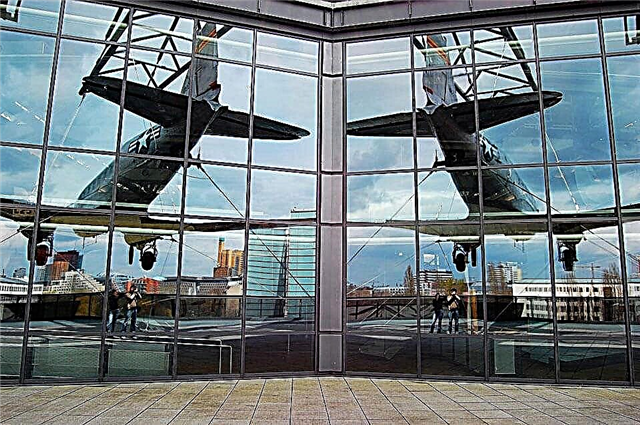
The glass building of 5 floors, built on the site of the former depot, looks very impressive. Extravagance is given by the symbolically important exhibit on the roof - the C-47 Skyrain bomber, which delivered food to blocked Berlin in 1948. Founded in 1982, it has essentially become a technical park, where on an area of 25 thousand square meters. km, a huge number of various units, technical devices, many types of aviation, auto and marine equipment are widely represented.
Life-size wind and water mills, a smithy, a mini-brewery are located here. Separate expositions fully demonstrate the achievements of the energy, shipbuilding, aviation, film and photo industries. The territory of the museum contains modern buildings surrounded by a park, where scientific and educational classes for children are held. Together with the Archenhold Observatory, the Technical Museum conducts research in the field of space, organizes joint exhibitions and lectures. It is impossible to see all the exhibits of the museum of technology in a few hours; you can come here many times, like for the first time.
Address: Trebbiner Strase 9 10963 Berlin-Kreuzberq.
Working hours: Tue-Fri: 09.00-17.30, Sat-Sun: 10.00-18.00; Holidays. - 10.00-18.00; Monday - day off.
Tickets (in euros) - adult.- 6 (with a discount - 3.5); group (from 10 people) - 4, with a discount - 1.5.
Family (1 adult and 2 children up to 14 years old) - 7; (2 adults and 3 children up to 14 years old) - 13.

